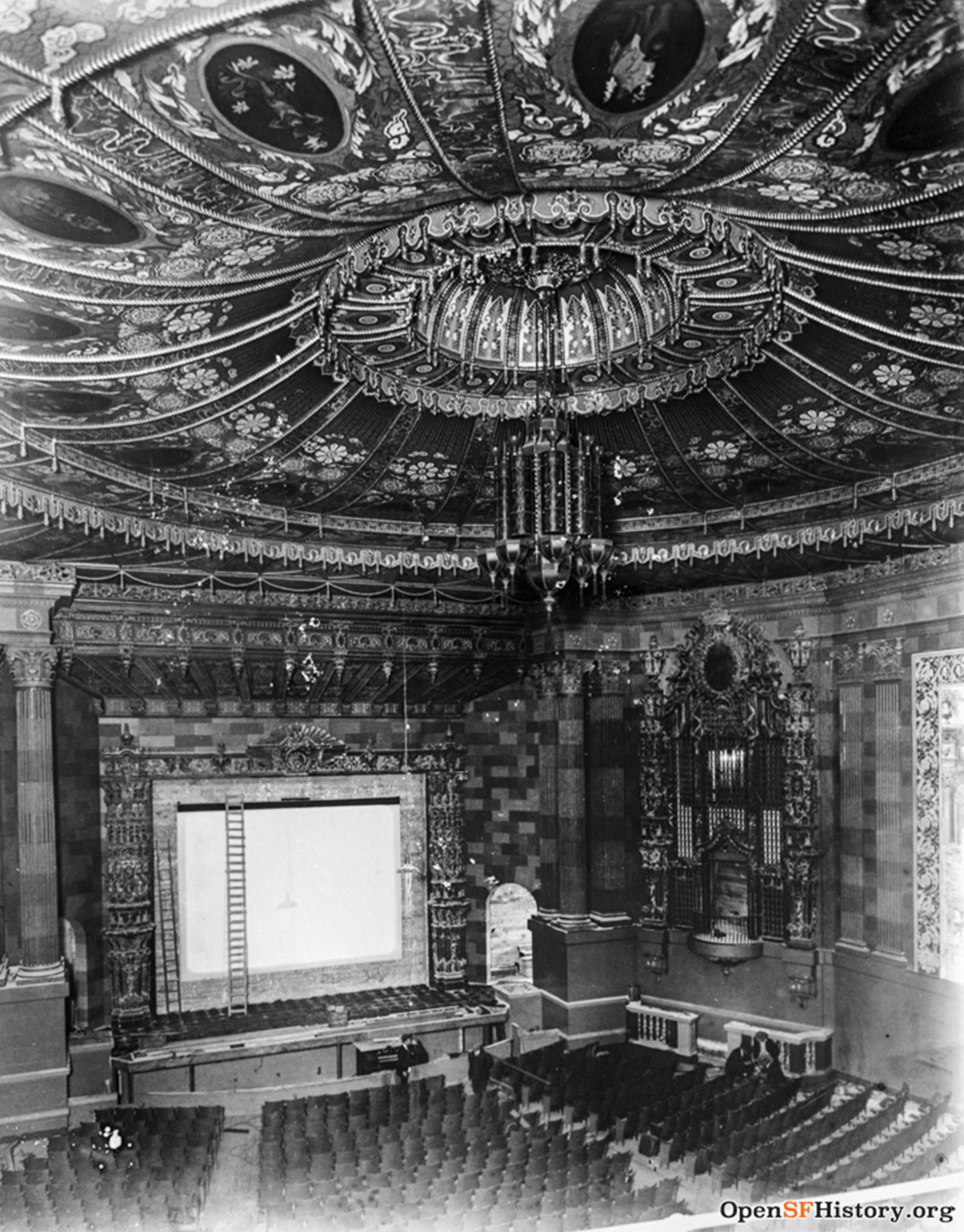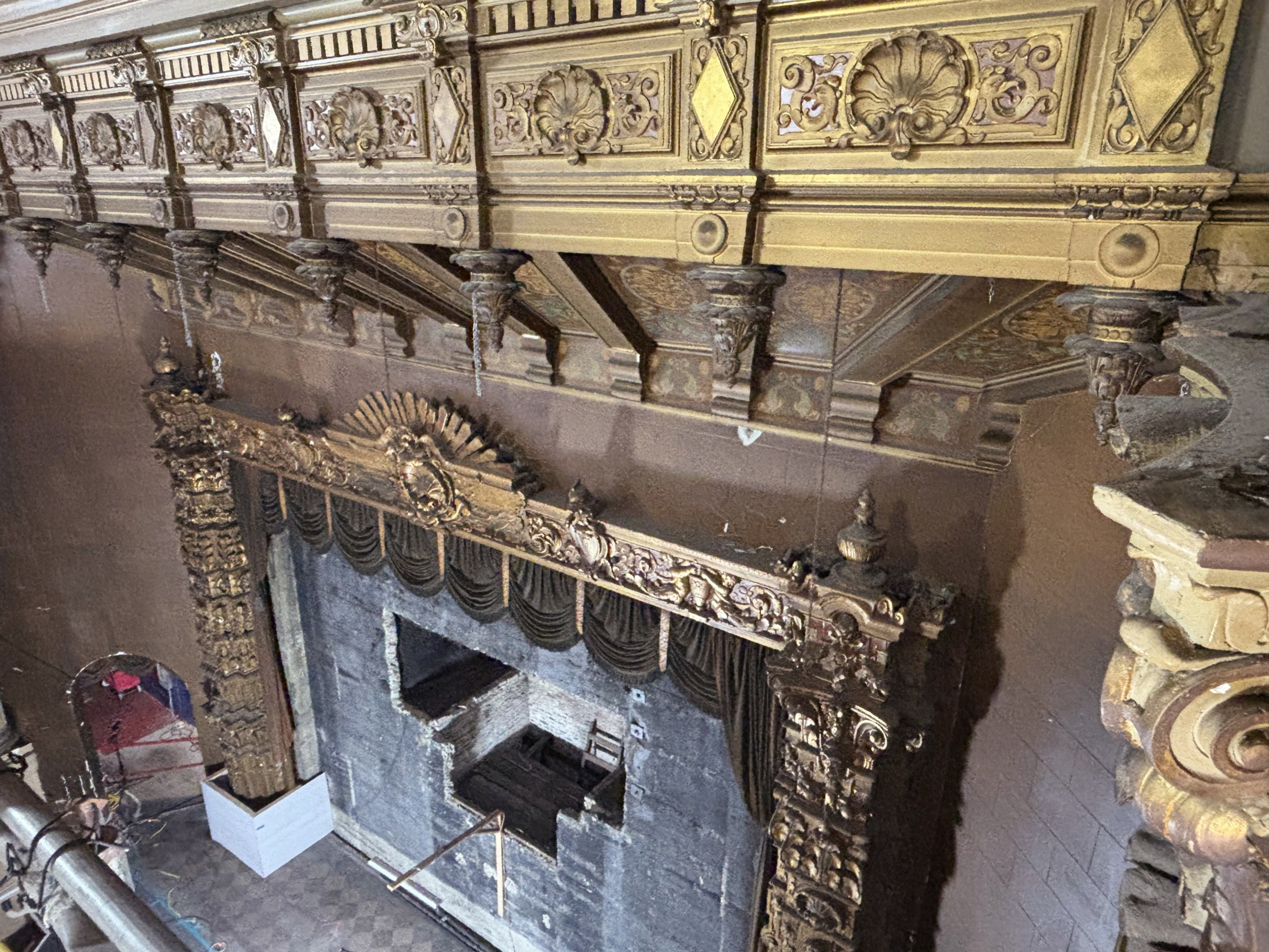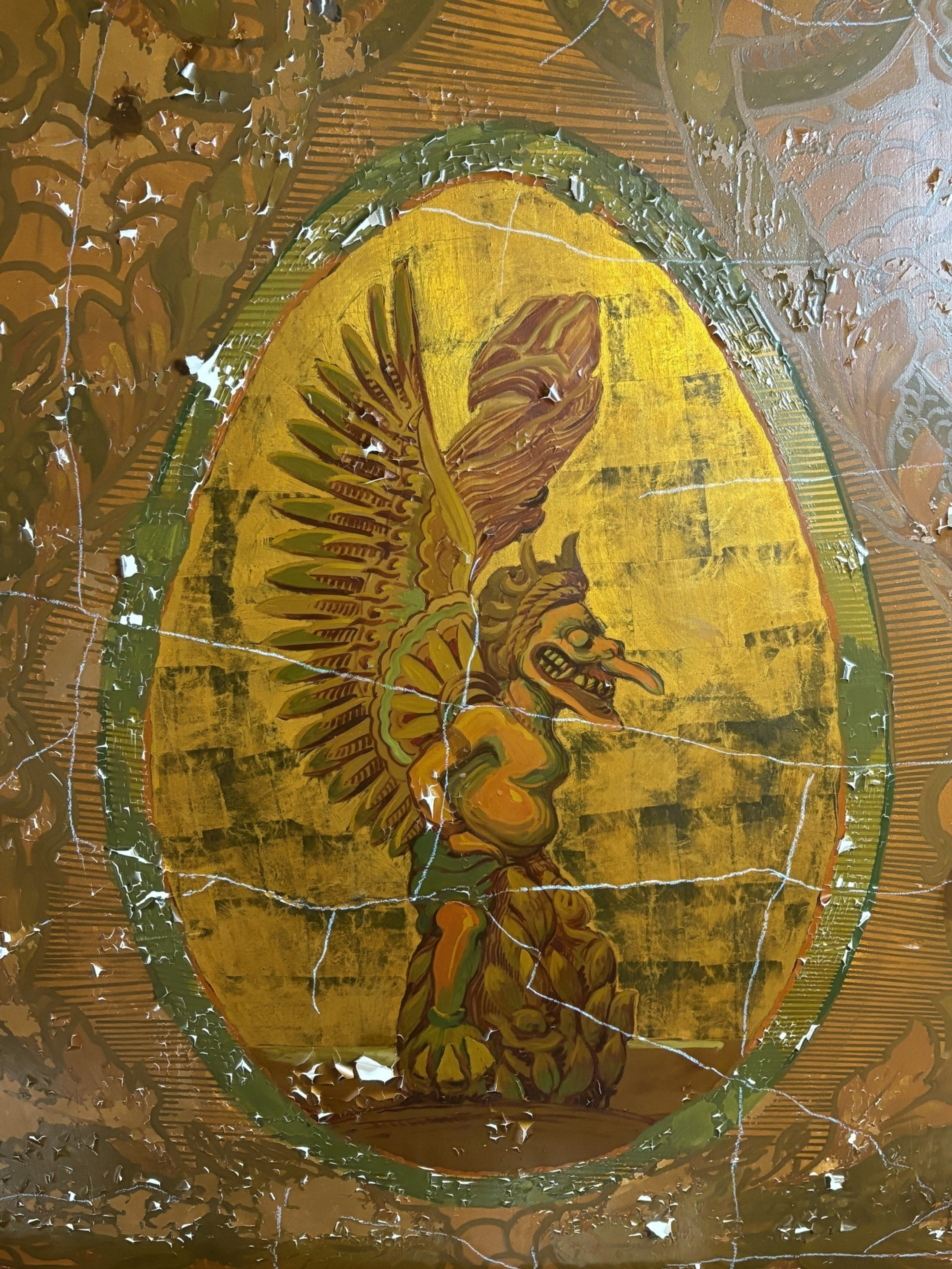In 1922, when San Francisco’s Castro Theatre opened, a romanticized version of the “Orient” was foremost in the moviegoing public’s mind. Rudolph Valentino’s smash hit The Sheik had come to screens the year before, and British “Egyptologist” Howard Carter would discover the tomb of pharaoh Tutankhamun that November.
These days, the Spanish Baroque-style theater itself resembles an archaeological dig. Having closed in early February for the largest renovation in its 102-year history, the Castro has become a hard-hat site that has turned up discoveries of historical significance—and awakened ghosts from the movie hall’s illustrious past.

A restoration team hired by the theater’s new management company Another Planet Entertainment (opens in new tab) is working to overhaul its century-old interior, removing cigarette stains and, in some spots, cleaning 2 inches of caked-on grime. Mary Conde, a senior vice president of Another Planet, gave The Standard an exclusive tour this week, escorting two reporters up a makeshift ladder to a platform supported by scaffolding some 45 feet above the orchestra, barely 15 feet beneath the ceiling.
From that vantage point, the Castro almost looks like a 16th-century church. Up close, the viewer sees astonishing details—things the movie-watching public would have had to squint to view, even with the house lights on. Intricately carved angels crown the chambers that contain the Mighty Wurlitzer organ pipes while hand-etched faces in the “sgraffito” style line the walls, a testament to architect Timothy Pflueger’s commitment to craftsmanship.

So far, the $15 million project is on track for a summer 2025 completion, Conde said—even though the work is meticulous. The restorers are looking to salvage everything possible, from cherubs covered in gold leaf to a cross-legged ceiling figure who looks ripped from the Kama Sutra.
“There are some areas where the damage is just too great, and we’re going to have to sort of go in and do some blending of old imagery and new,” Conde said. The tricky part is making everything feel cohesive. “You don’t want a line where you can tell, ‘Oh, that’s where they did the restoration work in ’24.’”

As with excavations near Egyptian pyramids, sometimes the team finds something they never expected. In the case of the Castro, it was an entire theatrical arch (known as a proscenium) that frames the stage. “It was hidden since the 1950s or ’60s, when they went to wide-format Panavision movies,” Conde said. “They put in a wider screen and erected a scaffold structure out of lumber that hid this original proscenium. We had no idea this was back here!”
Other work is proceeding apace. Blue chalk outlines identify cracks in the plaster. Gold leaf, along with its cheaper imitation, Dutch gold leaf, will be reapplied to the angels and dragons exactly as they were painted a century ago. The house’s chandelier is now in the hands of the family-owned company in Richmond that first installed it in 1937.

Perhaps most dramatically, ceiling panels are being treated to remove decades of nicotine residue. Designed by the architect Pflueger and depicting a cultural mishmash of figures—one looks vaguely like a Mesoamerican deity—the panels’ renovation will go a long way toward making the theater’s interior pop. But cleaning them isn’t necessarily a matter of brushing them off.
“After the earthquake in ’89, we’re thinking that somebody put polyurethane on the ceiling, because there was some plaster” that broke off, Conde said. Different sections of ceiling are in different states of disrepair and require different strategies to clean them.
Another Planet, which also runs Bill Graham Civic Auditorium and produces the annual Outside Lands music festival took over management of the Castro two years ago, and immediately courted controversy when it announced plans to transform the landmark theater into a multiuse venue focused on live music. Segments of the LGBTQ+ and cinephile communities’ had mounted a vigorous “Save Our Seats!” campaign in the hopes of preserving it as a queer-centric repertory theater—even as second-run movie audiences had long been diminishing.

For many years, the Nasser family—descendants of the seven brothers who built the theater and who own it to this day—managed to keep the Castro from becoming a gym, as happened to the Alhambra Theatre on Polk Street. But years of deferred maintenance meant the Castro was truly beginning to disintegrate, with chunks of plaster that fell from the ceiling stored in the basement for posterity.
Some of those chunks may become casts to help create their replacements, said Conde. Beyond the fuss paid to aesthetic detail, the restoration project is also a nuts-and-bolts job. When it reopens in a little over a year, the Castro will have improved sound and lighting and the world’s largest electric organ, plus brand-new heating and cooling systems, and a refurbished marquee. As for the seats themselves, they’ve all been removed from the orchestra level to make room for all the scaffolding.
Conde believes passions have cooled a bit from the vehemence of the initial community meetings during the summer of 2022. “I understand why people have such a strong feeling about this place. It’s really special, and it should have people that are willing to fight for it,” she said. “But I really think we are doing the right thing.”
